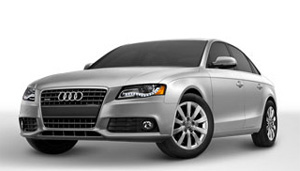How to Find Car Invoice Prices to Get the Best Deals
 Car dealers buy wholesale and sell retail, the way most businesses work.
Car dealers buy wholesale and sell retail, the way most businesses work.
They buy vehicles from the car manufacturer (all car dealers are independent businesses, not owned by a manufacturer) for a specific price (invoice price) and mark up that price (sticker price) when selling to customers.
It’s the same way that JC Penney, Walmart, Amazon.com and most other companies work.
However, there seems to be a certain mystique about automobile invoice prices that isn’t there when dealing with department stores and other kinds of businesses.
It stems from the fact that dealers often advertise “will sell at invoice” or “below invoice prices” and have brought the attention on themselves.
Automotive customers are more aware of the fact that car dealers sell at different prices to different customers, and that it is actually possible to buy a car at or below wholesale price (because dealers say so). Customers want the best deal possible, and expect to get the same kind of deal that other customers are getting.
What is invoice price?
Invoice price is the price a car dealer pays to the manufacturer for each vehicle he buys. The price is the same for every dealer across the U.S. for the same car.
Invoice price is only one of a number of costs that dealers pay.
Destination cost is also charged to dealers. It is a transportation and delivery fee that is also the same for every dealer, even if the dealer is next door to the manufacturing plant. Dealers simply pass this fee along to customers without markup or profit.
Dealers may also be charged advertising fees, although these may not come directly from the carmaker. Often, these fees come from a regional dealers’ organization, and may be passed on to customers as a distinct line item in sales contracts.
Dealers borrow money, usually from the car company, to finance the cost of buying vehicles for their showrooms and new-car lots. There are finance costs (interest) on those loans, called floorplanning. The longer a car sits on a dealer’s lot, the greater the floorplan cost.
Built into dealer invoice prices are what are commonly called “holdback.” This amounts to about 2%-3% of MSRP but can vary by carmaker. This fee can be returned to dealers after vehicles are sold, as compensation for “floorplan” costs (finance fees for loans that dealers use to buy vehicles from manufacturers). Automotive consumers sometimes think that this is simply added dealer profit that should be passed along to them.
How can a dealer sell at invoice price or below invoice price?
The answer: With a great deal of financial help from the manufacturer of the cars he sells.
Dealers sometimes build up large inventories of unsold vehicles due to slow sales. Carmakers don’t like this situation because dealers then do not order more cars from the factory. Therefore, the factory helps dealers sell cars by offering incentives to customers to buy more cars (0% loans, employee prices, rebates, special lease deals).
A manufacturer might also provide “hidden” factory-to-dealer rebates and sales bonuses to dealers in monthly promotions. Although these dealer incentives are not directly seen by customers, dealers can pass them along, in whole or in part, to customers as price discounts.
With a combination of customer incentives added to “hidden” dealer incentives, along with direct price discounts, dealers can easily sell vehicles at below-invoice prices. Both the dealer and the carmaker contribute to the deal, and usually sacrifice much of their usual profit. Incentive programs usually exist for a short period of time — a month or two. Then those incentives are removed or possibly replaced by another new incentive program for the next month.
Car buying customers often expect dealers to sell at or below invoice prices even when incentives are not being offered. This is not reasonable.
The only time a dealer can sell at or below invoice price is when he is getting help from his manufacturer. The key to smart buying and leasing is to watch for manufacturer-incented (“subvented”) deals. These are usually heavily advertised on TV, in newspapers, and on car makers’ web sites. Most are genuinely good deals, although usually limited to certain models and styles for a limited time period.
Something else to consider
Car dealers make much of their profit not on the car sale itself but on what is sold in the F&I (Finance and Insurance) manager’s back office.
This is the guy who draws up all the paperwork for you to sign, takes your down payment, and gives you your car keys. However, a big part of his job is to sell you something before you leave. He’ll talk to you about extended warranties, credit insurance, paint sealant, security systems, gap insurance, fabric protectant, rust proofing, and other “options.” He’ll explain how “little” these products add to your monthly payment.
Understand that these are high-profit items for a dealer. A dealer can often make more profit off such sales than on vehicle sales. Just make sure that you actually need the products or services offered and that you can’t get them for a better price from another source.
You’ll have to dig a bit, but current invoice prices can be found on these and other automotive web sites for free. It’s good to know invoice price, but don’t expect dealers to sell at or below invoice price if they aren’t getting help from their parent car company.
What is more realistic is to understand what current market prices are for the car you are interested in. If there are current incentives and dealers are getting help from their factory, it will be reflected in the market prices — what other people are actually paying.
For more details about car pricing, see our article, Car Pricing Secrets.
